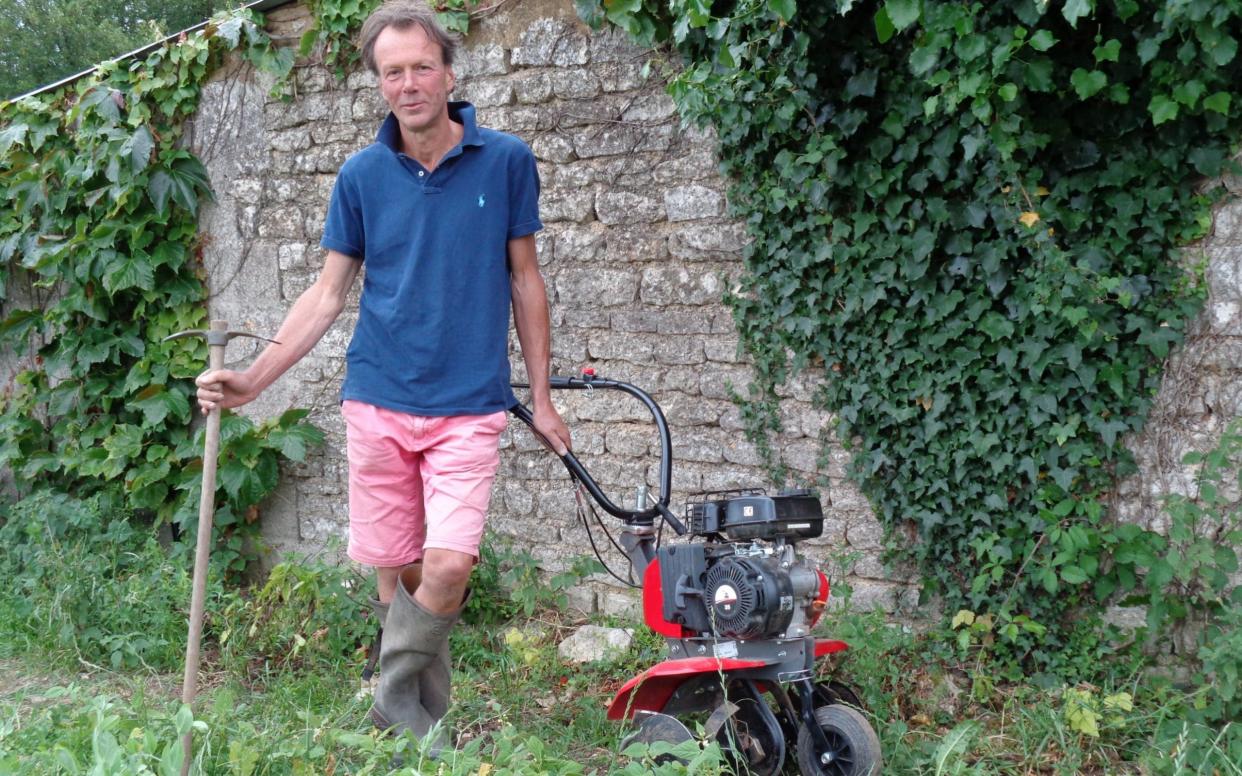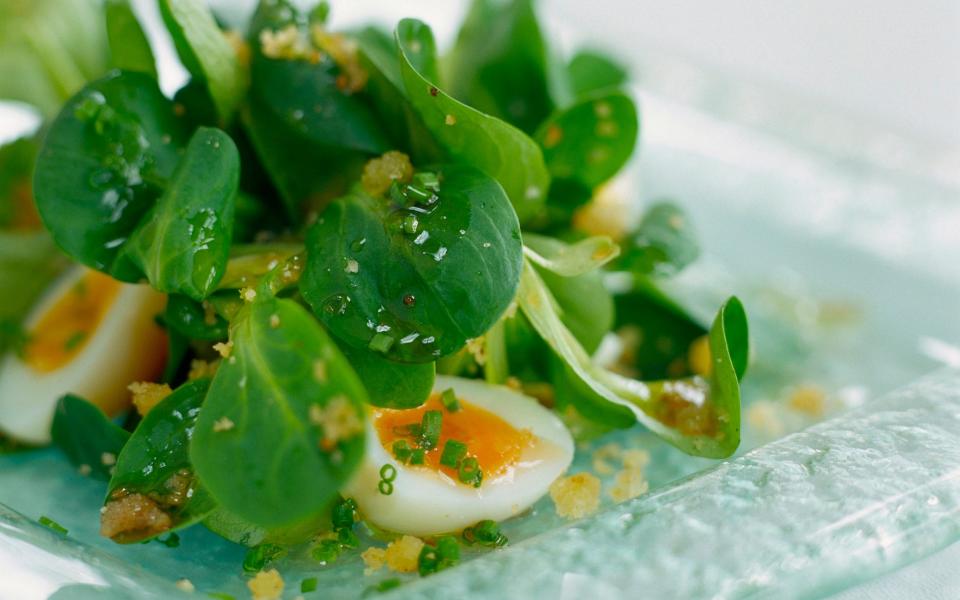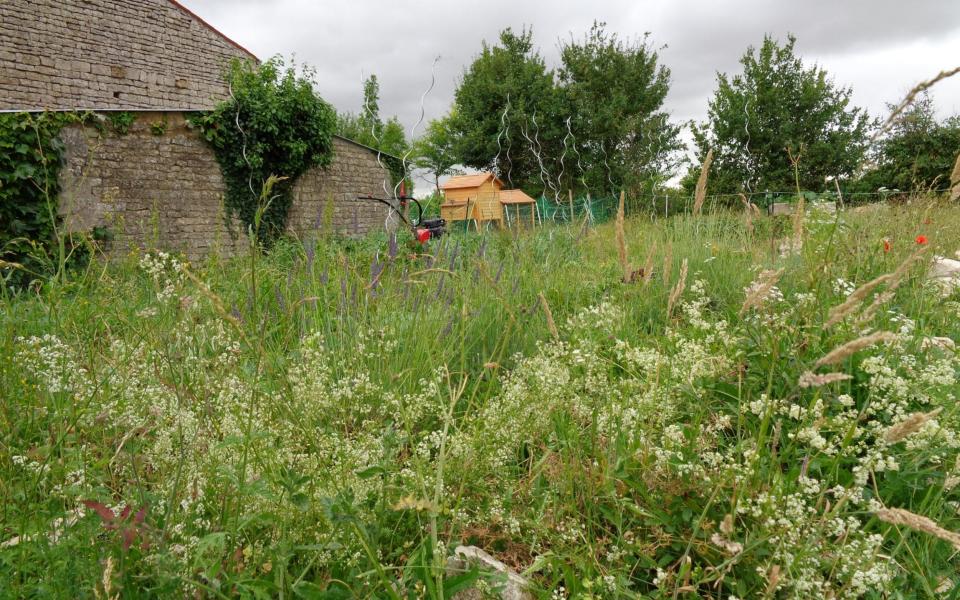How I found solace and salad in my French potager

La Roche is exactly how you picture a little village in South West France. Roofs of terracotta, bleached walls. Sleepy and shuttered against the blaring sun. A cat picking its way from the village hall to the cemetery.
If you are coming down the stone track from the forest we are the first house. If ascending from the village, the last house. Either way, we live in what our neighbours call “La maison tout seul”, or sometimes “La maison bleue”, the latter nomenclature in honour of our particular wooden shutters, as brilliantly azure as the Charente sky.
The house was built fin de siècle by La Roche’s priest, Father Jacques, and provided him with a fine outlook over his flock in the trickle of medieval lanes below. By the same positioning, I have an eyrie over my neighbours’ gardens. Or more precisely, over their potagers.
To describe a potager as simply a Gallic kitchen garden is to lose sophistication in translation. The potager is, indeed, intended to supply the soup pot the year round but, since its origins in the palaces of the Renaissance, it is ornamental too. Function and style in a single entity, which, if you think about it, is very French indeed.
Every house in the village down the hill has a potager, even the two new bungalows. “Grow your own” is a philosophy and a praxis alive and well in deep France. And, Mon Dieu, self-sufficiency has been vital during Covid-19.
The plague has hit La Roche hard. Here fraternité is more than an official word on the wall outside the Mairie. We only live in La Roche for part of the year, but have become wholly adopted, in the words of village elder, Jean-Luc, as “part of the furniture”.
In La Roche on meeting your neighbours you automatically, sincerely, ask “Ca va?” Then parse Stade Rochelais’s latest performance (rugby in SW France is a fundamentalist religion), or matters epicurean. We talk all the time. Normally.
Confinement has killed company and conversation on the rue. Masks and social distancing have sadly turned us inwards. True, Rocheans are not as paranoid as the people of the cities, who seem intent on mass enactment of Sartre’s existentialist drama Huis Clos (No Exit). You know, his play with the line: “Hell is other people.”
But, strange days, indeed.
Rocheans have survived coronavirus spiritually and gastronomically courtesy of the potager. We are not alone. The regional newspaper, Sud Ouest, recently declared “Potagers – les stars du confinement.”

Let me tell you about the kitchen garden at the curé’s house in La Roche. Most of the village potagers tend to floral formalism, with soigné lines of marigolds and tulips adorning the veg. The Lewis-Stempel potager has something of a wild vibe; it is the aesthetic of nature I admire above all others.
Also, I do not insist on a conceptual cordon sanitaire between cultivated crops and weeds, which, I think, is rather Francophiliac of me. After all, dandelions are still a staple in French salads.
So the square limits of the potager, while indicated by precisely placed pale limestone boulders, are rambled by native flowers of the chalkland escarpment: succory, scabious, cornflower, poppy, campion, herb robert, buttercup, ox eye daisy, wild clary clad with imperial purple flowers, and pyramid orchids wearing purple, beehive hairdos.
Each day, the stones around the potager rise a tad higher. This is stony ground, and the most obstructionist rocks need to go somewhere. (When I rotavate the patch, the clink-clank of geology against the steel blades is reminiscent of Stockhausen’s Kontakte.)
Above the knee-high stonework and wild flowers, one end of the potager is a rustic stone barn, scrambled by ivy. The remaining three walls are walls of sound fabricated from birdsong; calls of cuckoo, turtle doves, and nightingales so diurnally importunate they are more accurately “dayingales”.
So my potager has the first prerequisite of this French institution: cloistral calm. It is somewhere to reflect, and relax. Reinflate the spirits.
Inside the four walls, the wild-flower theme continues: the five long veg beds are divided from each other – somewhat haphazardly – by narrow meadowy paths.

Below the veg beds, framed by borders of sow thistle and hawkweed, are four squares of salad, potato and herbs from dill to verbena via parsley, thyme, hyssop, tarragon, sage, lavender (three varieties: Dutch, Papillon, Vrai), sorrel, rosemary, mint, lemon balm, and my new favourite, savoury (sarriette vivace).
Wild marjoram spreads like petrol-aided wildfire, and is underfoot on the pathways, so the tread of wellingtons releases its piquant, lemony aroma into the herbal air-mix.
My potager is a perfumed garden. It is also a feast for the eyes; in addition to the wild flowers, there are small clumps of cultivated wallflowers, alyssum, nasturtiums, dahlias. Nature deserves a helping hand.
As for vegetables and salad, I grow what Father Jacques grew: cabbage, potatoes, lettuce, spinach, radish, peas, haricot beans, chicory, onions and garlic (of course), not omitting mâche, that Gallic salad stalwart, which never really appears on British plates. Oh, and I also grow tomatoes and courgettes, which last year provided such a glut that I understood why the French invented ratatouille.
I know the Good Father’s planting regime; tucked away behind a table in the potting shed were remnants of Vilmorin seed packets from around the time of the Great War.
Vilmorin is the oldest seed company in the world, founded in Paris in 1743. There are still people who use M M Vilmorin-Andrieux’s Les Plantes Potagères, published in 1883, as their self-sufficiency bible. Such as myself.
I confess. Before I lived in France I thought the concept of “terroir” was a nifty marketing trick by the Gallic Department for the Advancement of Agriculture.
Now I am convinced by terroir, the notion that a site’s geology, latitude, elevation, exposure to sun – nature’s grants and constants – express themselves in the crop grown there. I believe I can taste our terroir in everything picked from our plot.

Yesterday, I lifted our first potatoes of the year, 'Sirtema', cooked them with mint – from my all-provisioning potager, naturally – and in the mouth, ahh, that salt-hint of health and minerality.
The French are a nation of gardeners, and I have come to understand why. It is about good food, seasonal food. In French households some 20 per cent of the fresh produce consumed is grown in the kitchen garden.
But the French commitment to the potager is about French identity too. To cut spinach from the potager for lunch (strictly observed here in La Roche, 12-2pm) is to continue in the eternal ways – a sort of French resistance to the mondialisation of life, in the same way that the l’Académie Française contends Anglo-Saxon incursions into the language.
One of the very first “freedom” measures from Covid confinement announced by President Macron was to allow the French out to buy plants for the potager. Whereas the UK Government suggested stocking up on… tins.
Mon potager français; satisfier of stomach. And soul.
Tips for travelling gardeners
Visit potagers-de-france.com for information on kitchen gardens (mostly of the grander sort) that are open to visitors to France. The website is in French but all member gardens are plotted on a map of France, enabling you to see what is in your vicinity.
Visit opengardens.eu/ for a more general view of open gardens in France, the website is in both French and English.
I wouldn’t be without…
La serfouette

This is my indispensable tool. A natty, nippy French hoe, of medieval origin. One can also plant with it, trench with it, lean on it for a breather.


